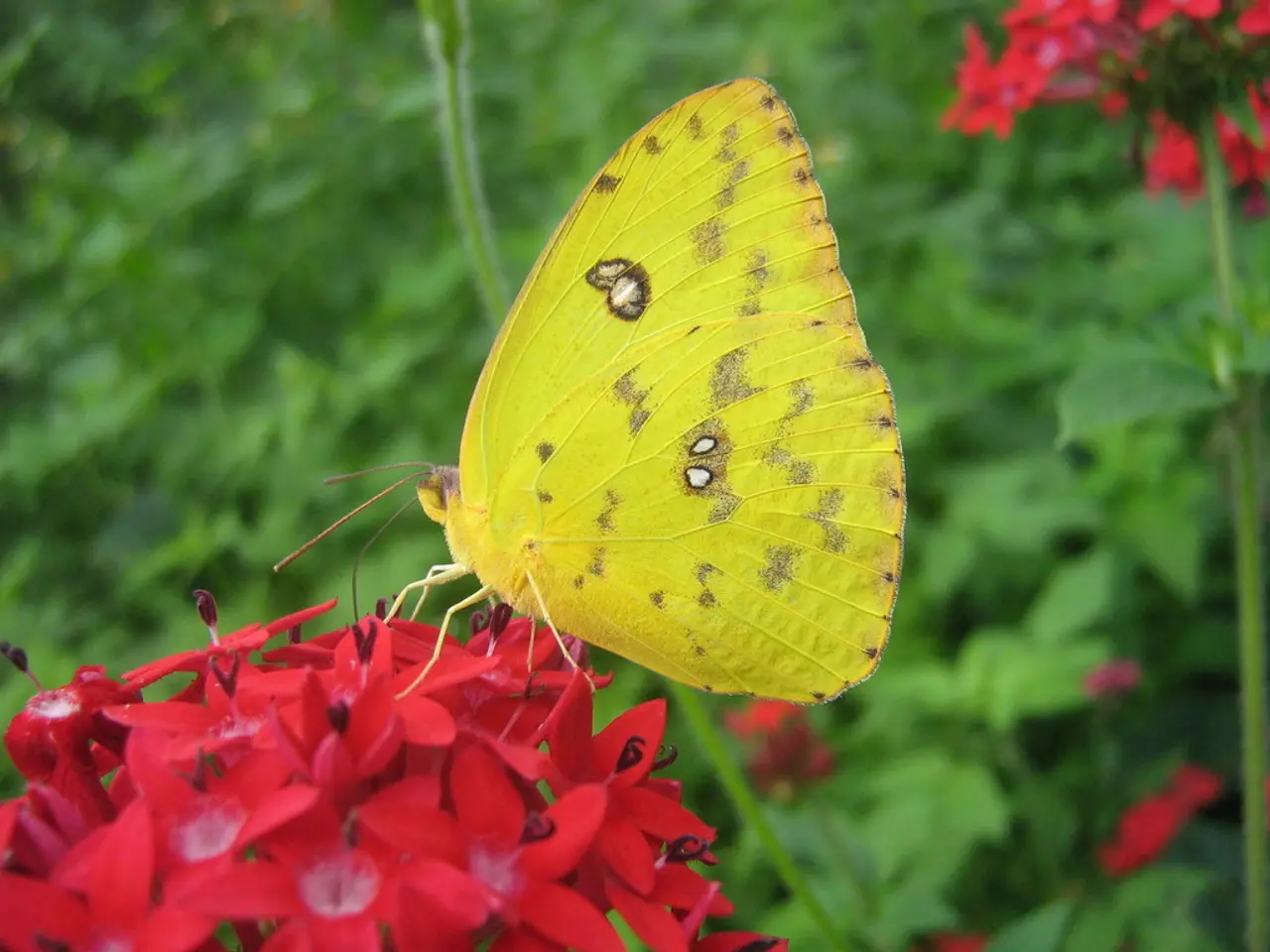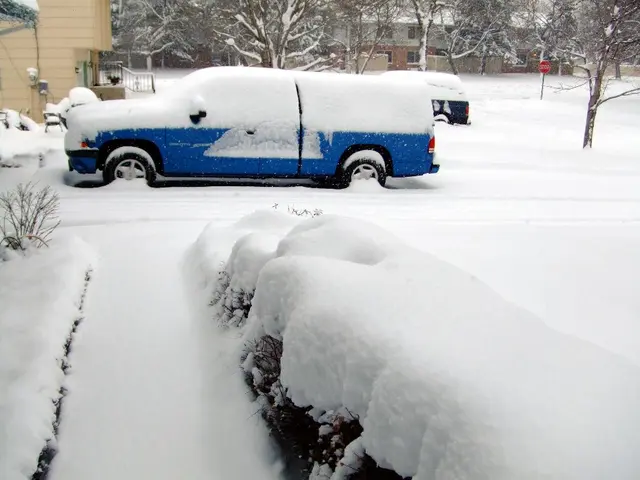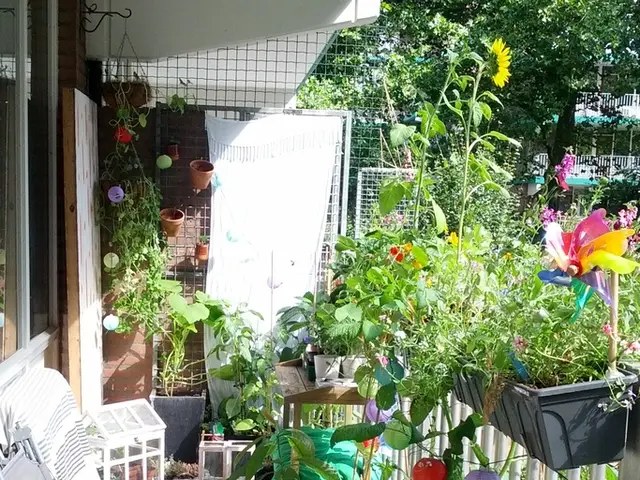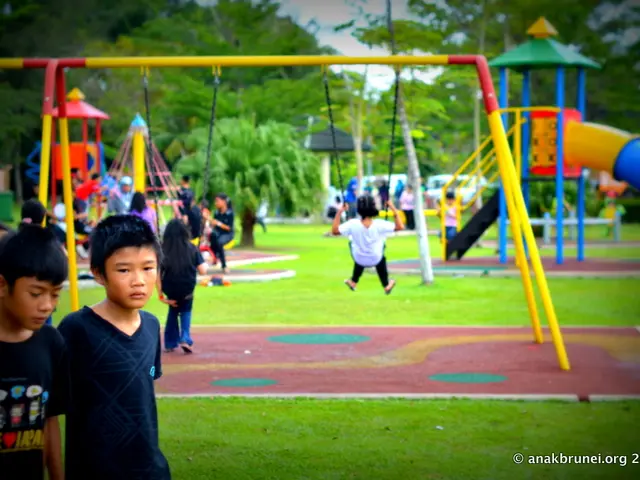Increase your garden's beauty with butterflies: 7 strategies to entice these captivating creatures
Having a Butterfly Oasis: A Gardener's Guide to Attracting Maligned Creatures
Want to create a stunning backyard sanctuary and lend a hand to striking butterflies? These much-needed pollinators require a specific environment that is becoming scarce in many areas. Here's how you can turn your outdoor space into a butterfly paradise.
Don't think that creating a butterfly-friendly garden is only for the lucky few with lush lawns. Any area, regardless of size, can accommodate flowers that butterflies adore. But remember, these vibrant creatures aren't just aesthetic additions – they play a crucial role in our ecosystem. Recent reports by the United States Geological Survey reveal a significant 22% drop in butterfly populations over the last two decades, illustrating the dire need for individual efforts in preserving these majestic creatures [1].
By mastering the art of butterfly gardening, you're not only contributing to their survival but also helping the flora around you thrive. Here are straightforward steps to turn your garden into a haven for these dazzling pollinators:
Let Them Find Their Fuel
Attract butterflies with a palette of vivid hues such as red, orange, yellow, and purple – colors that these creatures can see but often overlooked in the average backyard [2]. These alluring colors are a call to action for butterflies, but that's not all; they're also seeking tasty nectar, ripe for the sipping.
Plant these proven butterfly favorites in your garden: aster, lavender, milkweed, sage, and sunflowers. These plants offer the perfect combination of color, delectable nectar, and accessibility that butterflies crave. Plant these glorious flowers in clusters instead of scattering them individually, making it easier for butterflies to locate their essential food sources.
Butterflies are selective when it comes to landing spots. Choose flowers with flat or clustered blooms that double as stable perching spots. Stay away from flowers with deep, narrow tubes that make nectar difficult for butterflies to access.
Keep the Party Going All Season Long
Butterflies are active from the beginning of spring through the end of autumn. To satisfy these energetic visitors, you need flowers blooming throughout this entire period. Achieve this by combining perennials (plants that return each year) with annuals (plants that last one growing season) in your garden.
Early spring favorites include crocuses and primroses, while summer staples include zinnias, marigolds, and cosmos. Keep it going with late-season bloomers like asters and goldenrod, which provide crucial food sources as butterflies prepare for winter or migration.
To ensure your flowers continue producing fresh nectar, deadhead spent blooms regularly. This simple task encourages plants to produce new blossoms, ensuring a continuous supply of mouthwatering nectar for your darling guests.
H2O Haven
Butterflies need water to quench their thirst, but they can't land on open water surfaces without the risk of drowning. Create refreshing watering holes by making shallow mud puddles or "puddling stations." As butterflies partake in this essential behavior called puddling, they can drink safely while replenishing essential minerals.
To make a puddling station, fill a shallow dish with 2-3 inches of soil or sand, then add water until the surface glistens. Place the dish in a sunny spot where its charm will entice butterflies, and they can bask in the sun while nourishing themselves.
For even more nourishment, add 1-2 tablespoons of salt to the soil before adding water. This creates a "salt lick," providing the necessary sodium that butterflies can't get from nectar alone [2].
Hummingbird Nectar Feeders: Your Secret Weapon
If you're looking for an effective way to attract even more colorful visitors, hummingbird nectar feeders might be just what you need. Amazon offers a wide variety of these bird feeders, complete with nectar trays, fruit compartments, and ant moats for efficient feeding. Prices start as low as $15 for durable feeders with multiple feeding options and easy-clean designs.
Extra Energy Bites
Enhance natural nectar with homemade butterfly food. Mix 3 teaspoons of sugar per cup of water, boil until dissolved, then cool completely. Pour this solution into shallow feeding dishes placed near your flowers.
Replace the sugar water every few days to prevent fermentation, and clean feeders regularly to prevent mold growth. For extra appeal, turn these feeding stations into a fruit buffet by adding pieces of brightly colored fruit like lemons, apples, or oranges.
Maximum Sunlight Exposure
Butterflies are cold-blooded creatures that rely on sunlight for warmth and energy. Plant your butterfly garden in the sunniest area possible, with at least six hours of daily sunlight.
Add basking spots by placing flat, wide stones among your flowers. Opt for gray or light-colored stones that warm up in the sun but won't become too hot. Avoid black stones that could overheat and potentially harm delicate butterfly feet.
Position these warm stones where they'll receive morning sun, offering butterflies a nice spot to warm up after cool nights.
Cozy Shelters and Protections
Butterflies require refuge from wind, rain, and predators. Plant a variety of plants at different heights to provide layers of protection, including tall flowers, medium shrubs, and ground cover.
Include some wild areas in your yard, with log piles, rock collections, or patches of tall grass that offer essential shelter. You don't need expensive butterfly houses – simple natural materials work better.
Plant native trees and shrubs around your garden's perimeter to create windbreaks that shield butterflies from harsh weather conditions.
Stay Away from Harmful Chemicals
Never use pesticides, herbicides, or chemical fertilizers in your butterfly garden. These substances can harm butterflies directly or contaminate the nectar and plants they depend on. Even "organic" pesticides can have detrimental effects on butterflies.
Instead, opt for organic gardening methods such as composting, companion planting, and encouraging beneficial insects that naturally control pests. Organic matter such as coffee grounds, eggshells, and banana peels offer excellent natural fertilizers.
If pest problems arise, choose targeted physical methods like row covers or manual removal over chemical sprays.
Ready for more success stories in your garden? Avoid the common lawn care mistakes that are killing your yard and learn how to revive a dying houseplant – 7 tips that actually work. Plus, if you're eager to attract more hummingbirds, try these 7 tips every bird enthusiast should know.
Want to stay informed about the latest gardening trends and tips? Sign up to our newsletter to receive the best of our content straight to your inbox!
References
[1] Why Your Garden Matters: The Importance of Native Plants – The Xerces Society. (n.d.). Retrieved July 14, 2023, from https://xerces.org/wp-content/uploads/2020/08/WHY_YOUR_GARDEN_MATTERS_RESEARCH_BRIEFS.pdf
[2] Butterfly Garden Design: Best Practices for Attracting Butterflies – National Wildlife Federation. (2022, January 11). Retrieved July 14, 2023, from https://www.nwf.org/Garden-for-Wildlife/Certification/Butterfly-Garden-Design
[3] National Pollinator Garden Network – Million Pollinator Garden Challenge. (n.d.). Retrieved July 14, 2023, from https://www.millionpollinatorgardens.org/
[4] Top 25 Butterfly Nectar Plants – North American Butterfly Association. (n.d.). Retrieved July 14, 2023, from https://www.nababutterfly.org/butterflies/nectar-plants-and-shrubs.htm
[5] Monarch Watch – Milkweed and Monarch Conservation. (n.d.). Retrieved July 14, 2023, from https://www.monarchwatch.org/monarch-resources/plants/butterfly-host-plants/
- Transform your home-and-garden into a thriving home-and-garden-for-butterflies by carefully selecting plants that offer vibrant colors and delicious nectar, such as aster, lavender, milkweed, sage, and sunflowers.
- Create a haven where butterflies can rest, drink and socialize by adding watering holes, like shallow mud puddles or puddling stations, and seeking out native trees and shrubs that offer ample shelter and protection.






